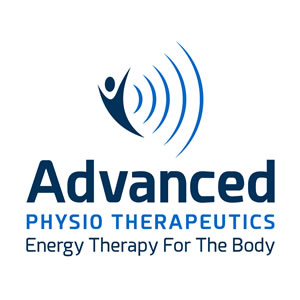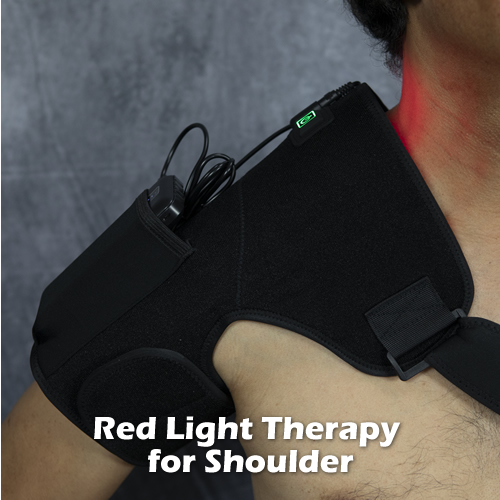It’s 2021 and time to kick off the 30 Day Pain Relief Challenge!
But first I want to acknowledge what’s on everyone’s mind.
2020 began with an unexpected crisis, the COVID-19 pandemic. A new corona virus strain emerged; highly contagious and deadly for certain individuals, and for which there was no vaccine. As of this writing, over 85 million people worldwide have contracted the virus, with 1.85 million dying from it. The United States is being hit the hardest, with 20.8 million cases and 352,000 dead. The numbers are expected to spike following the holiday season, thanks to many people choosing to get together in large groups and ignoring the risk. So please, remain extra vigilant the next two weeks because chances are, there are more viruses around you than there were a month ago, ready to find a new host.
As we navigate through COVID-19 in 2021, life must still go on. I know many have been hurt economically, and their number-one priority is to find a way to get back on their feet. It is not an easy thing to do, especially if you lost your job and the life skills you possess are in an industry that has been permanently impacted by the pandemic. If this describes your situation, I sincerely hope you find a way to re-position or re-invent yourself, to get back to earning a living.
While COVID-19 dominates the news and peoples’ attention, we must not lose focus on the many other challenges life presents that also need our attention. How would you rate your health at the start of the new year? How about your energy levels and endurance?
Quarantining and social distancing have a way of discouraging exercising and promoting over-eating, a terrible combination to health. When one is restricted from going outside and going to a gym (although a gym is not necessary for staying fit, but I digress…) and constantly bombarded by news of doom and gloom, the tendency is to stay home, surf the web, and eat, more than you typically do (what else is there to do in such a scenario?). And for many, the choice is high-calorie comfort food. This can lead to unwanted weight gain, muscle atrophy, joint pain, and so on.
If you are not feeling 100%, then I encourage you to open all the emails I’ll be sending over the next 30 days—the 30 Day Pain Relief Challenge is about to kick off, and email is how it will be executed.
And what exactly is the challenge? It’s about challenging yourself to get out of your comfort zone and do all the things I will suggest in the coming days so that you can get out of pain, or significantly knock it down to levels you haven’t experienced in a long time.
The other reward may be that you will lose 10 pounds or more; will have more energy, and will notice that your mind/ thinking is clearer. This is because the methods I’ll go over target your body and all its systems; not just the area of pain. It is wholistic.
But first let me explain how you will be measuring your results. After all, pain is subjective. You need some kind of tool to quantify your improvement, so read on.
Pain, aches, discomfort or whatever you want to call it affects your health. There is mental health and physical health; both important to happiness in different ways. Your physical and mental health are impacted, even just a little and perhaps unnoticeable to you, if you have chronic pain/aches/discomfort. Less-than-optimal physical and mental health impacts quality of life. Quality of life in this sense refers to your ability to physically do what you need or want to do; whether it be your job; recreational activity such as playing golf or swimming; or activities of daily living; i.e. taking care of yourself and your personal needs.
Why You Might Have a Disability if You Have Pain
If you live with chronic pain, you likely have some degree of disability.
“Me disabled?” you might be thinking. “No way!”
The word “disability” is often misconstrued. Disability doesn’t necessarily mean “disabled” and in a wheel chair. It simply means not being able to perform a certain task without some degree of difficulty or impediment; or not being able to do it at all.
Doctors (medical examiners) who issue disability certificates or write medical-legal reports are tasked to determine the degree to which someone is disabled. Their findings determine the patient’s disability compensation from the insurance company or government agency. They use observation, physical exam procedures, diagnostic tests like X-rays and nerve conduction; and instruments to measure strength, pain perception, reflexes, coordination, and range of motion. Any deficiency is expressed as a percent disabled, and there are laws that define levels of disability.
For example, in the insurance industry, the loss of both eyes, or the loss of two limbs equates to “100% disability.” Not being able to maintain a tight grip could be rated as 20% disability if the person’s occupation requires power gripping machinery.
Disability can also be subjectively quantified using Disability questionnaires where the patient rates his/ her ability to perform certain tasks on a scale of zero to some number; and the level of pain. In some questionnaires, the zero rating means you have zero difficulty doing the task (best score), while in others the zero rating means you cannot do the task at all (worst score).
For example, the following is one section of the Oswestry Low Back Pain Disability Questionnaire. Imagine having low back pain and rating yourself (0 to 5) on your ability to lift things:
LIFTING:
0 – I can lift heavy weights without extra pain
1 – I can lift heavy weights but it gives extra pain
2 – Pain prevents me from lifting heavy weights off the floor, but I can manage if they are conveniently positioned, i.e. on a table
3 – Pain prevents me from lifting heavy weights, but I can manage light to medium weights if they are conveniently positioned
4 – I can lift very light weights
5 – I cannot lift or carry anything at all
When rating yourself, you must try to be as objective as possible—don’t over rate your ability; nor under rate it. Give each question some thought.
Then, you add up the numbers, divide it by the total number of points and multiply by 100 to get a percentage score.
If the zero rating is assigned to “full ability to do the task” (like the Oswestry above), then the score is interpreted as “percent disabled.” So, an individual with no low back disability whatsoever will score zero out of 50 and his rating will therefore be zero percent disabled; i.e. 100% functional. If his score is 30, then 30/50 x (100) = 60% disabled.
Below is an example of an Oswestry Low Back Pain Disability Questionnaire completely filled out:

In the above example, the total points out of all ten questions is 19, which is considered a Moderate disability, out of No, Mild, Moderate, Severe and Total Disability. In this case, 19/50 x 100 = 38% disabled due to low back pain. Now this person has a baseline for his condition, and can set goals to lower it each time; perhaps to 20% after a month, then 10% after three months of therapy.
If the zero rating is instead assigned to “no ability to do the task,” the score is interpreted as “percent functional.” This is how the Upper and Lower Extremity Disability questionnaires are designed. So a score of zero in this case means zero percent functional (totally disabled), and 30% means you are 30% functional (you lost 70% function in that limb).
Please note that Disability questionnaires are used as tools to quantify and set baselines for pain and functional capacity; your scores do not officially establish any disability you may have, they simply provide a more tangible interpretation of pain.
Quantifying pain/disability, even if subjective, gives you a sense of how significant it is; i.e. how much it affects your life. Secondly, it can be used as a tool to measure your improvement over time, after doing some therapy and/or rehabilitation (strength and coordination exercises). This lets you know if what you did works for your condition, and therefore, whether to continue or discontinue it.
For example, if your baseline Oswestry score was 60%, and you were prescribed some McKenzie exercises for one week and a follow- up score was 40%, it suggests that those exercises improved your condition and you should continue or progress to the next level. If it was 60% or higher, you should discontinue the exercises and try another approach.
You don’t have to see a doctor to use Disability questionnaires to subjectively assess your disability. They are fairly straightforward to use and you can download the forms from the internet (see below; I’ve done it for you).
Determine Your Pain/Disability Baseline
If you have low back pain, neck pain, shoulder pain, or lower or upper limb pain then I suggest monitoring your condition using the appropriate disability questionnaire. If you are getting therapy, your doctor should be having you fill these forms (or something similar) out each visit and going over the results with you. It’s substandard care if you don’t know if the therapy you are getting or exercises you are doing is helping; these questionnaires will prompt you to think about the change or lack of change in your functional capacity, and will help you assess your care so that you can take appropriate action.
Below you will find forms to assess any musculoskeletal pain you are having. If you wish to participate in the 30 Day Pain Relief Challenge, print out the appropriate disability questionnaire; rate your abilities as objectively as you can and calculate your score; set it aside, and be ready to fill out a new questionnaire after 30 days of diligently doing the things I will cover over the next 30 days.
My goal is for participants to experience at least a 50% improvement in their pain/ disability scores. If you have any friends who might be interested in participating, please refer them to my site, https://PainandInjuryDoctor.com and have them enter their email in the opt in form.
Download the Low Back Pain Disability Questionnaire
Download the Neck Pain Disability Questionnaire
Download the Shoulder Pain and Disability Index Questionnaire
Download the Upper Extremity Disability Questionnaire
Download the Lower Extremity Disability Questionnaire











